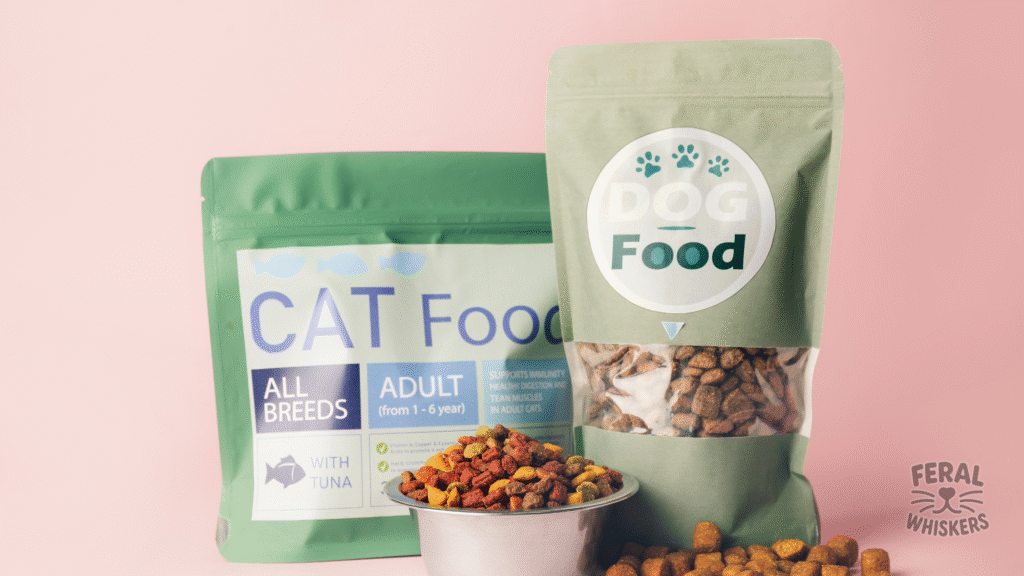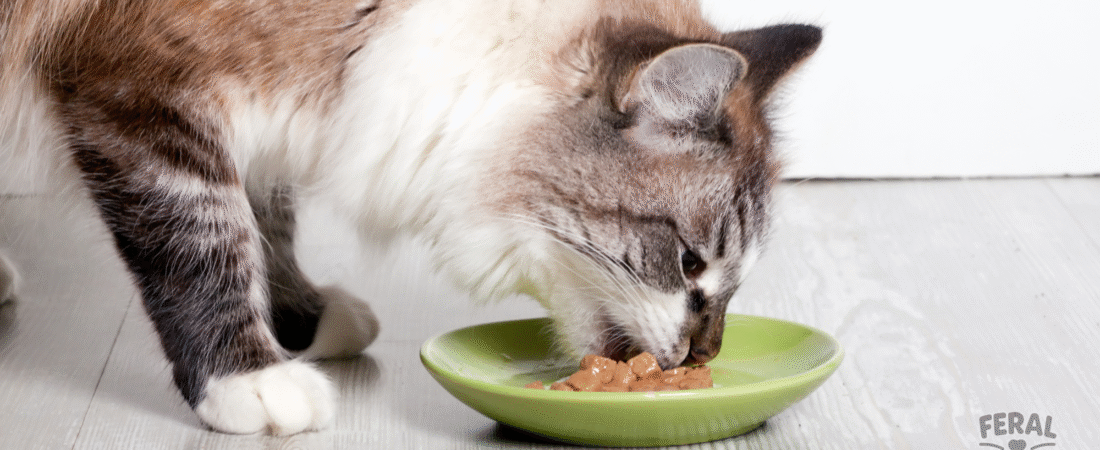
📌 Why Cat Food Labels Matter
Walk into any pet store and you’ll find shelves packed with cans, bags, and pouches of cat food — all claiming to be “premium,” “holistic,” or “vet-recommended.” But which ones are actually healthy?
👉 The truth: Labels tell the story. Knowing how to read them helps you choose cat food that’s nutritionally complete, safe, and matched to your cat’s needs.
🧾 Step 1: Look for the AAFCO Statement
The Association of American Feed Control Officials (AAFCO) sets minimum nutritional standards for pet food.
What to look for:
- AAFCO Nutritional Adequacy Statement printed on the label.
- Example: “This food is complete and balanced for adult cats according to AAFCO standards.”
- Terms mean different things:
- “Complete and Balanced” → Meets all nutrient requirements.
- “All Life Stages” → Suitable for kittens & adults (often calorie-dense).
- “Intermittent or Supplemental” → Not a full diet, only a topper or treat.
⚠️ If no AAFCO statement = treat it like a snack, not a meal.
🧾 Step 2: Check the Ingredient List
Ingredients are listed in descending order by weight.
What you want:
✅ Animal protein listed first.
- E.g., Chicken, Turkey, Salmon, Beef, Rabbit.
✅ Named meals or organs. - “Chicken meal” (protein-dense) > “Meat meal” (mystery meat).
✅ Healthy fat sources. - Chicken fat, salmon oil, sunflower oil.
✅ Low carbohydrate fillers. - Limited or absent grains, soy, by-products.
What to avoid:
❌ “Meat by-product” (anonymous, low quality).
❌ Corn gluten meal, soybean meal (cheap fillers).
❌ Artificial colors/flavors.
❌ BHT, BHA, ethoxyquin (chemical preservatives).
💡 Surprise fact: Not all by-products are bad — organ meats (heart, liver) are biologically great for cats. The problem is unnamed, cheap sources.
🧾 Step 3: Understand the Guaranteed Analysis
This box breaks down nutrients as percentages.
Key nutrients to look for in cats:
- Protein: 30–40% for kittens; minimum 25–30% for adults.
- Fat: 15–25% for kittens; 10–20% for adults.
- Fiber: 2–5% (cats don’t need much).
- Moisture: Wet food 70–80%, kibble ~8–12%. (Higher is better for hydration).
👉 Pro Tip: Use the dry matter analysis (DMA) to compare foods fairly between wet and dry. (Moisture skews percentages.)
🧾 Step 4: Marketing Hype vs Reality
Pet food labels are full of buzzwords:
- “Grain-free” → Good (many cats digest better), but some grain-free kibbles use potatoes/peas in high amounts.
- “Organic” → No synthetic pesticides, but nutrient balance matters more.
- “Natural” → Loosely defined term; doesn’t mean healthier.
- “Holistic” → Marketing term, not regulation.
- “Human grade” → Higher quality but watch the nutrient profile — cats are not tiny humans.
💡 Rule: Ignore front label claims. Trust the nutritional info panel.
✅ Quick Label Red Flags
- Ingredient list starts with corn, wheat, soy → filler food.
- Uses artificial dyes (Red 40, Blue 2, Yellow 5/6).
- Carrageenan in wet foods → may cause gut inflammation.
- Too many gums (guar, xanthan) → thickens but can upset digestion.
🌿 Holistic Nutrition Add-Ons
Even with a good commercial food, many cat parents add natural toppers:
- Pumpkin/pureed zucchini: Fiber, gut balance.
- Probiotics: Support healthy digestion.
- Fish oil (vet-safe dose): Omega‑3s for skin, coat, and brain.
- Bone broth: Extra hydration + minerals.
Think of these as filling the gaps, not replacing balanced food.
❓ FAQs
Q1: Can I trust AAFCO-approved food 100%?
AAFCO ensures minimums — but not ingredient quality. Quality and balance both matter.
Q2: What’s more important — ingredients or guaranteed analysis?
Both. The analysis tells you nutrient balance; ingredients tell you quality of sources.
Q3: Why is “ash” listed on labels sometimes?
Refers to mineral content after burning food. High ash is linked to urinary crystals; lower is better.
Q4: Does grain-free always mean better?
Not always. Cats need protein first; some grain-free kibbles replace grains with carb-heavy potatoes/peas.
💡 Final Thoughts
Choosing the right cat food means looking beyond pretty packaging. By understanding AAFCO labels, guaranteed analysis, and ingredient lists, you can confidently pick a food that is protein-rich, moisture-balanced, and filler-free.
✅ Key takeaway: Labels are your nutrition road map. Learn to read them — and you’ll never fall for marketing tricks again.

